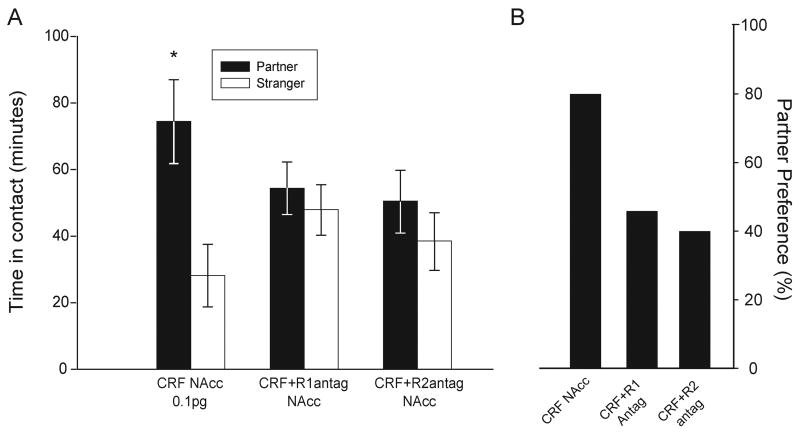Figure 3.
Both CRF1 and CRF2 receptors in the NAcc are necessary for CRF-facilitated partner preference formation in prairie voles. (A) Animals injected with 0.1 pg CRF into NAcc spent more time in contact with the partner than the stranger (p<0.01, Student’s t-test, Bonferroni level set at p<0.016). This facilitation effect was blocked by the co-infusion of a selective CRF1 antagonist (CP-154,526) and a selective CRF2 antagonist (anti-sauvagine-30) (p>0.3, Student’s t-test). (B) 80% of the CRF-treated animals developed a partner preference in the absence of antagonist, while less than half of those received CRF1 or CRF2 antagonist developed a partner preference.

